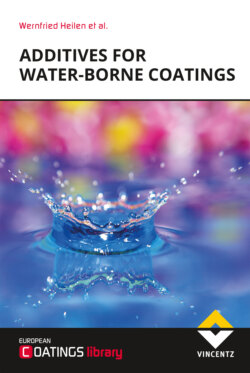Читать книгу Additives for Waterborne Coatings - et al. - Страница 16
На сайте Литреса книга снята с продажи.
2.1.4.2Colour strength
ОглавлениеConsideration of colour strength and amount of additive shows a different behaviour. As described in Chapter 2.1.2, wetting of pigment particles plays an important role in particle size, surface area and colour strength. The better the wetting, the smaller is the particle size, the larger is the surface area and the higher is the colour strength.
Particle wetting can be achieved in a number of ways:
The first and obvious option is to use wetting agents. These lower the surface tension of water and help the wetting of surfaces and particles. However, the dynamic nature of the grinding process and the risk of extensive foaming need to be taken into account. The wetting agent should not generate foam and should be highly dynamic.
Experienced formulators know that the wettability of non-ionic additives can be considered greater than the wettability of anionic (cationic) additives. The second option for improving pigment wetting is therefore to use non-ionic dispersants. These wetting and dispersing additives possess higher colour strength than anionic additives used to create electrostatic repulsion.
The dosage level of surface-active additives needs to be borne in mind. In contrast to the behaviour observed with regard to viscosity, namely that higher dosages lead to much higher viscosities, increasing the concentration of additive yields a higher colour strength but the curve (Figure 2.5) ends in a plateau, with additional amounts of additive producing only small effects. Initially, increased addition of additive improves the pigment wetting and hence the colour strength, but very high concentrations lead to double layers on the pigment particle, at which stage the pigment wetting cannot be improved and the colour strength no longer increases.
Figure 2.5: Colour strength and additive dosage (schematic)
